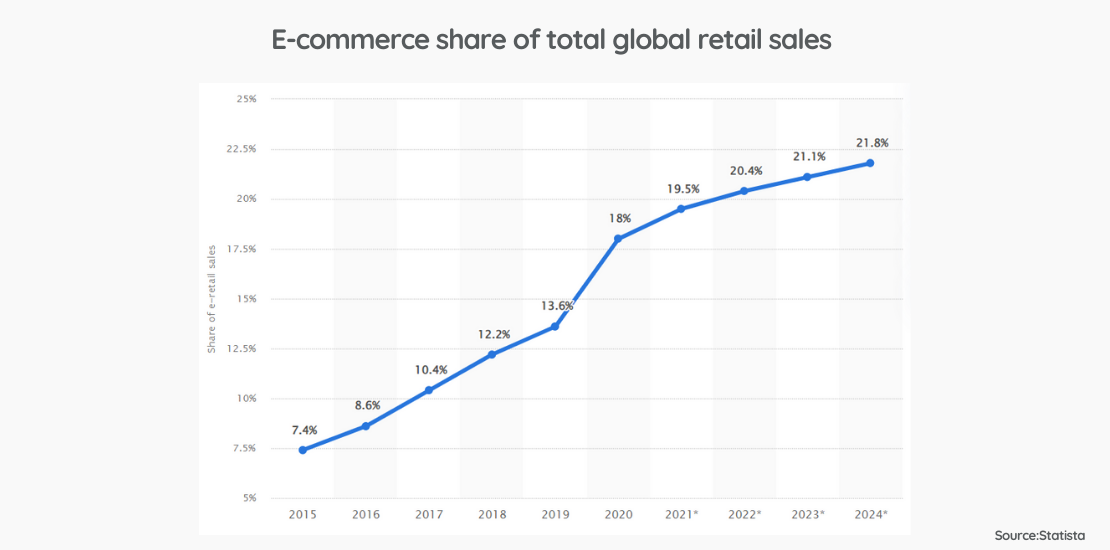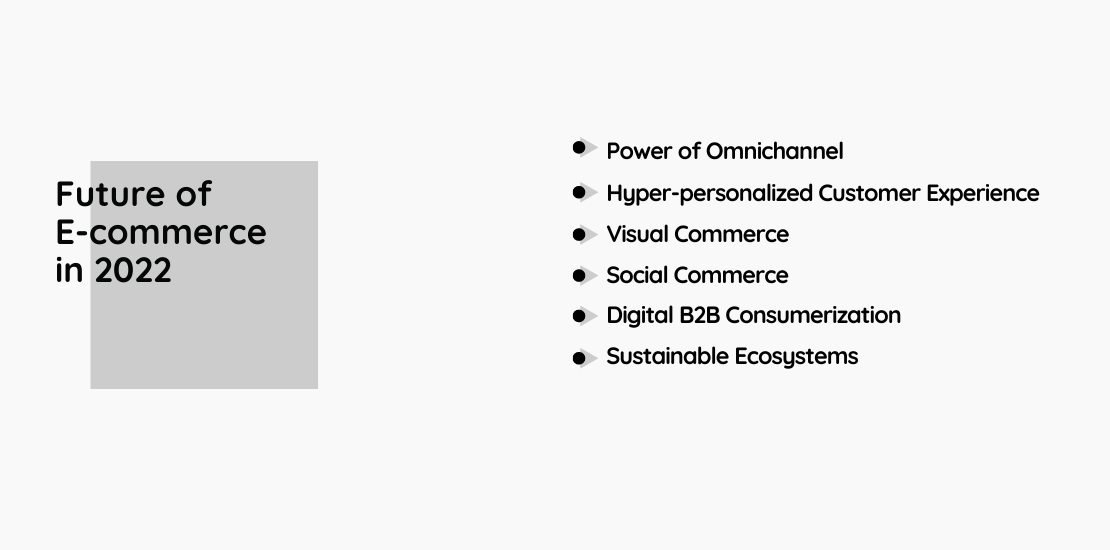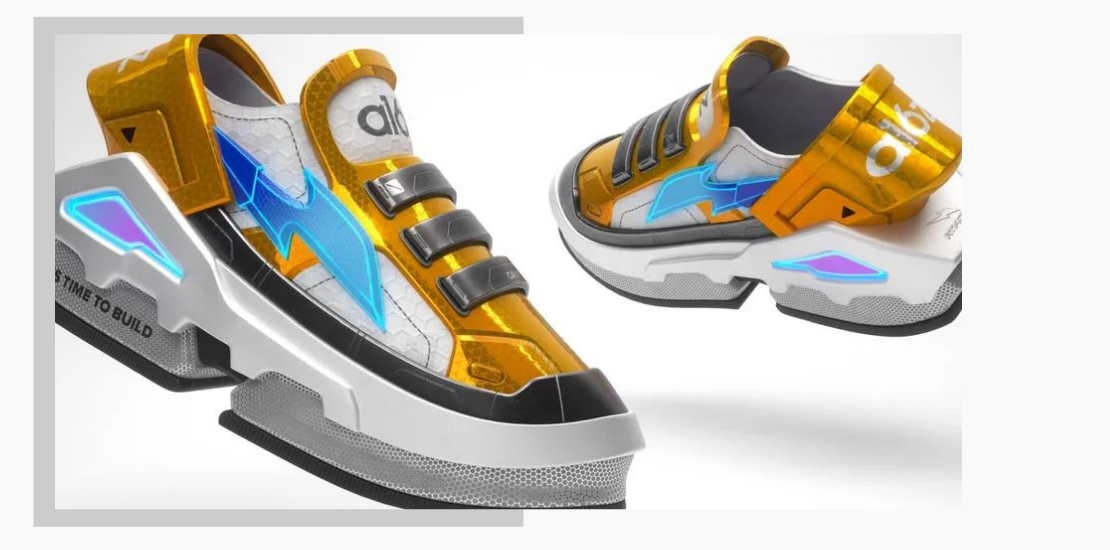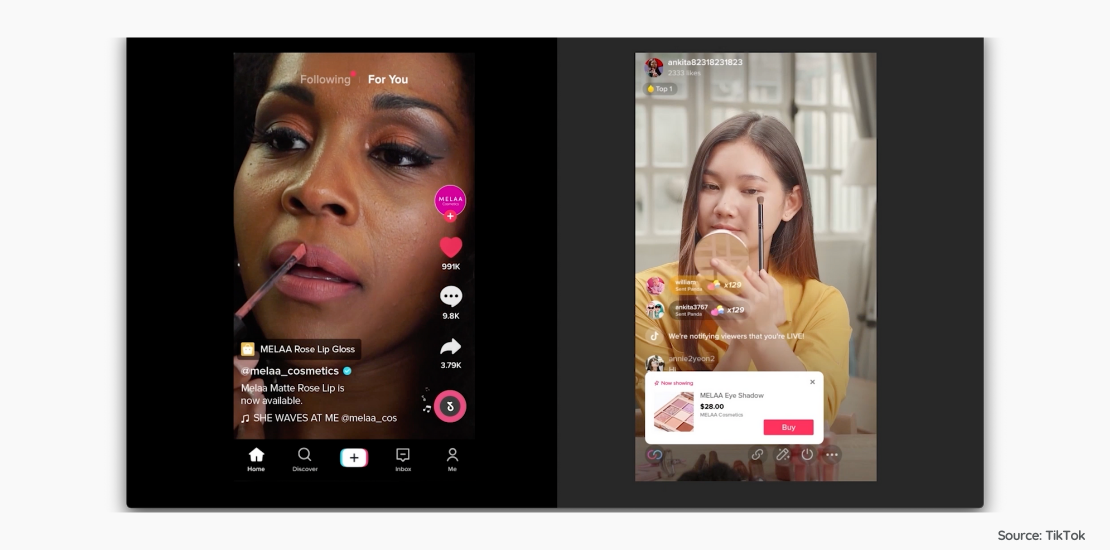

E-commerce trends change at a dizzying pace. While this is the case, following each trend as it develops can become a tricky business. The cycle is also getting faster. Just a few years ago every new e-commerce trend needed at least a year or two to come into play. Today, the key to keeping up is to make the right predictions and stay ahead of the trend.
The latest developments happened globally and technological breakthroughs change the needs and expectations of consumers and create new purchasing habits. Especially in the last two years’ events have given a great impetus to e-commerce. Everything from clothing to books; food to electronics can now be easily ordered online and if we look at the Statista data shown below, it is predicted that the e-commerce sector will continue to grow in the coming years.

Considering these predictions, it can be easily said that e-commerce has a bright future in 2022. That being the case, it is important for businesses to follow the trends and stay one step ahead to gain a place in the competitive market or to strengthen their current position.
With the global competition on the rise and consumer demand becoming more diverse and specific; establishing a strong digital presence has become a prerequisite for businesses to deal with both old and emergent challenges. In order to create this power, let's have a look at how online shops will evolve and provide more exceptional experiences. Here is our list of the most prominent e-commerce trends to watch out for in the year 2022.

Power of Omnichannel
We can all accept that omnichannel isn’t a new concept — in fact, it’s been around for a long time. So why are we still keeping this topic on the agenda? Because omnichannel is all about making shopping more seamless for the consumer and there is still plenty of room for excellence. More than 90% of retail executives in leading organizations say they either have an omnichannel strategy or are investing in technology to support such a strategy, but only 8% think their omnichannel efforts are well-executed.

Omnichannel refers to a unified shopping experience that transcends the boundaries of channels by providing seamless integration of all customer touchpoints including but not limited to, mobile, e-commerce websites, retail stores, and catalogs. With the number of channels growing, it’s important to consider how they work in unison.
Omnichannel is no longer considered a retail luxury but rather a necessity in today’s digital age. Statista research suggests that by 2022, 58% of in-store sales will be influenced by the use of digital devices either before or during shopping.

For providing a better customer experience and better reach numbers your business must be everywhere your customer is. Creating a perfect omnichannel ecosystem is only possible with a highly capable strong e-commerce infrastructure and partner that can meet the needs of your brand.
Hyper-personalized Customer Experience
When the digital and physical worlds converge, the customer experience becomes revolutionary. Customers today anticipate a higher level of personalization and will opt to buy from companies that can cater to their individual needs. Brands must innovate to stay up as tailored service becomes the standard. From the company’s perspective, the connected world creates infinite opportunities to use data in a strategic way by using big data analytics and machine learning. This hyper-personalized customer experience can be even further personalized through the application of artificial intelligence (AI) algorithms that whittle down big data into actionable insights.

Customers are increasingly anticipating personalization at every step of their experience, thanks to an increase in the number of communication channels and self-service interactions. If a company can successfully design these experiences for its customers, then it is assured that repeat purchases will occur.
Visual Commerce
Visual commerce refers to the use of images, videos, and even virtual and augmented reality to help customers learn about and engage with a company's products and services. It is transforming the way e-commerce companies attract and convert customers through commerce, social media, and product pages on their websites.

Due to rising online channels, customers are not examining products in physical stores as much as they used to before. This says a lot about how important the information provided by the brand is to understand if it meets their requirements. Whether using a product stock video or an influencer live streaming, utilizing visual content can help to improve brand awareness, give shoppers a better idea of what you sell, and increase sales conversions.

At this point, it is important to blend various selling approaches with innovative and creative ways, as the latest trend topic metaverse promises. The metaverse is a collective virtual shared space, created by the convergence of virtually enhanced physical reality and physically persistent virtual space, including the sum of all virtual worlds, augmented reality, and the internet. The metaverse has been hyped as the most promising technology to catalyze the next generation of human civilization. So, businesses have already seen the potential of e-commerce in the metaverse and are trying to be a part of that new booming market.
One of the most popular sportswear companies Nike has announced the purchase of an NFT-based studio that creates virtual shoes and collectibles, and with Nike's collaboration, they plan to sell real sneakers alongside virtual ones that you can purchase for you and your 3D avatar.

Vice president of innovation at Mastercard, Keith Jordan states that “Mixed reality will be increasingly accessible to businesses and consumers, transforming our lives over the next few years”. Hence, we are at the beginning of a historical event that could change what people expect from a future commerce platform.
Adding various sorts of content such as interactive materials, engaging videos, and augmented reality will become the new trend for the e-commerce industry and we probably will see more creative examples we even haven't dreamed of yet by the end of 2022.
Social Commerce
Social commerce has garnered significant attention and adoption from both marketers and retailers. Social platforms have become an essential part of our daily life for a while ago. In recent years, both e-commerce companies and social platforms work together to create mutually advantageous settings for product delivery to customers. Platforms such as Instagram, Pinterest, TikTok, and many others have accelerated their work on this topic, and intense competition in the social commerce industry is rising.

Following other players in the industry, in August 2021, TikTok tested the TikTok Shopping function in the United States, Canada, and the United Kingdom. Introducing the two-day live shopping experience "on trend" in mid-December, TikTok clearly showed that it will continue to make more new investments in commerce applications. Especially its common usage among Generation Z makes social platforms like TikTok key players in terms of social commerce.
Digital B2B Consumerization
Even before the pandemic era, B2B companies started to abandon their dependence on traditional channels like on-site visits and physical presentations in their sales processes. According to McKinsey, 96% of B2B organizations changed their go-to-market model during the pandemic to prioritize the digital channel.
Companies are more active than ever experimenting with – and in many cases deploying – digital consumerization strategies. Business to Business companies are slowly but surely strongly moving in the direction of recent digital sales practices. By 2023, B2B e-commerce sales in the US are expected to account for 17% of total B2B sales in the country, Forrester data suggests.

Today, B2B consumers don't just expect a transparent buying experience with their suppliers/vendors, but a more personal and less pushy experience that puts them first, above the bottom line of any firm.
As Millennials and Gen Z consumers are reshaping B2C e-commerce, B2B players must also understand how to leverage customer expectations and behaviors to achieve the same results on their side of the business. Although the B2B landscape was lagging behind the B2C, it is moving towards taking firm steps in digital commerce and gaining an important place with a strong volume with a rapid movement. This is why strong e-commerce platforms that can meet the unique needs of B2B brands, in terms of different operational processes from personalization setups to customized campaign structures, logistics to payment, will become prominent in the e-commerce business.
Sustainable Ecosystems
With the growing concern over global climate change, sustainability and ecologically responsible buying have become increasingly significant. A worldwide study commissioned by WWF and published by the Economist Intelligence Unit (EIU) indicates a %71 increase in popularity of sustainable product searches over the last five years, with growth continuing throughout the COVID-19 outbreak.

Changing consumer behavior will encourage companies to adopt more sustainable approaches in terms of commerce. Today, younger generations are more willing to put their money on sustainable products than their predecessors. As they get the pioneer customer groups, taking an environmentally conscious path for the brand strategy will be a smart decision for both our planet and brands in the next year.
Sustainable shipping, reducing packaging waste, sustainable product return policies, implementing recycling policies, reducing energy waste… There are thousands of different actions that can be taken to have a sustainable e-commerce presence. So if you haven't created one yet, building a clear strategy, focused upon creating real value for the customer, and supporting this with effective tools and metrics to deliver sustainability objectives should be priorities immediately.

In Conclusion
2021 was a challenging year and adaptation remained to be at the core of both our lives and e-commerce. Though, we made it through and even sort out more convenient and creative ways than ever.
As expected, in 2022, people will demand a smooth, efficient and exciting shopping experience more than ever and e-commerce will continue to increase its volume globally. With such an expansive industry, there are plenty of opportunities for growth, and many leading trends to follow in the coming years.
Investing in the right trends for your business strategy will enable you to respond fully to this ever-changing atmosphere. To make your company different than others, focusing on the incoming e-commerce trends brings you a competitive edge for providing better digital experiences. To do this, you need carefully conducted detailed strategies, a highly-capable e-commerce platform that can progress in line with your vision, and a strong digital commerce partner, like Inveon.
The future of e-commerce is exciting, and we can’t wait to see it unfold together!

